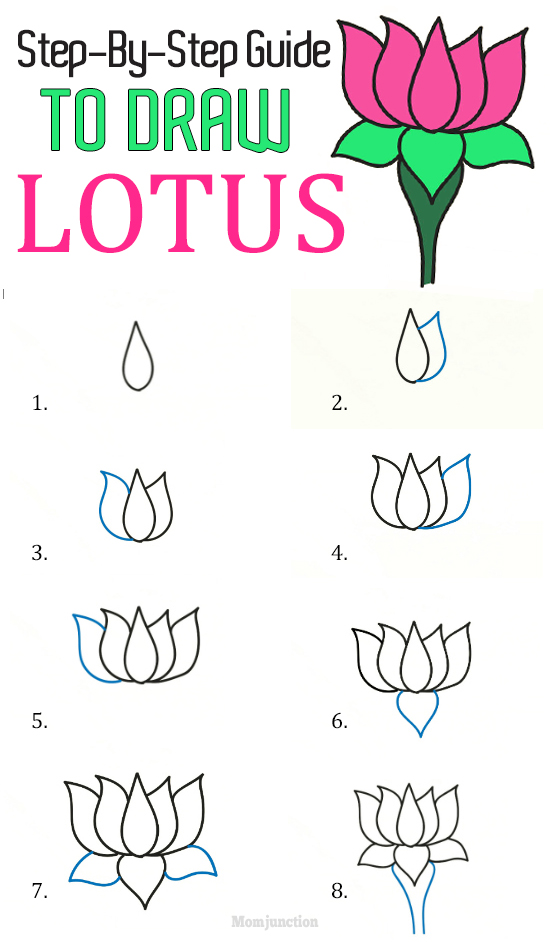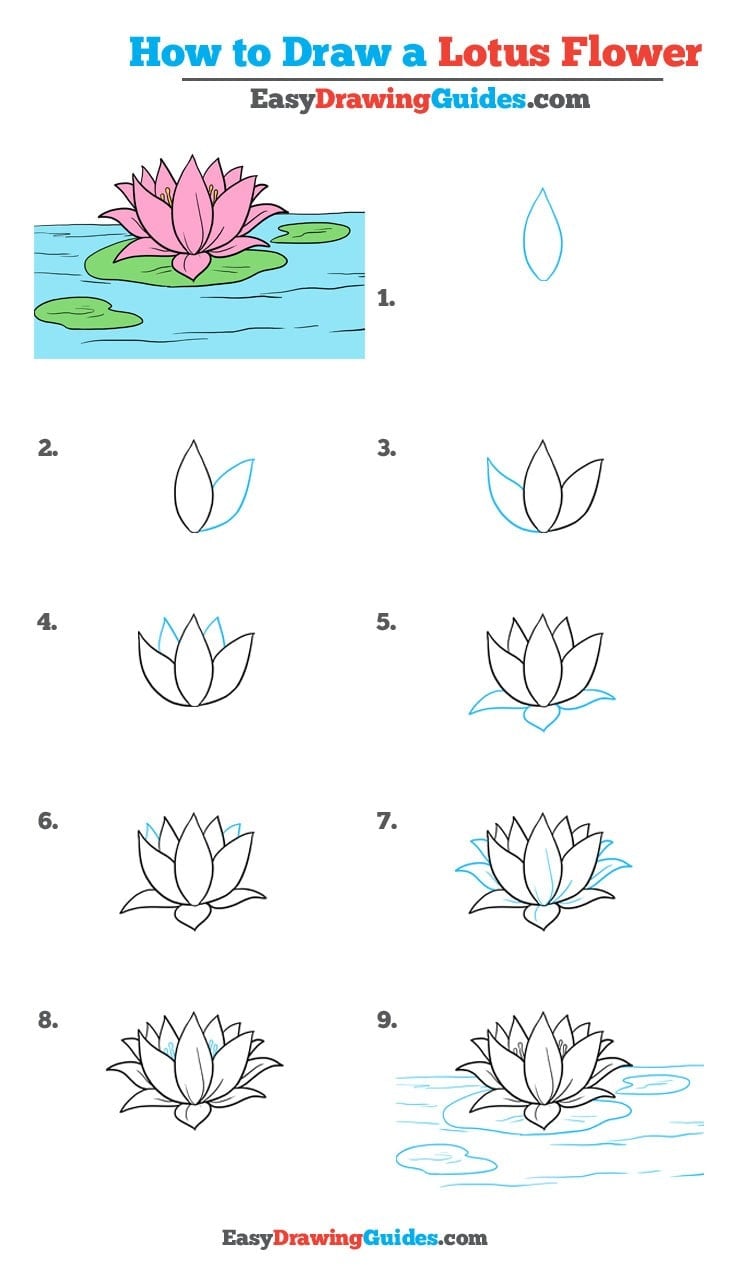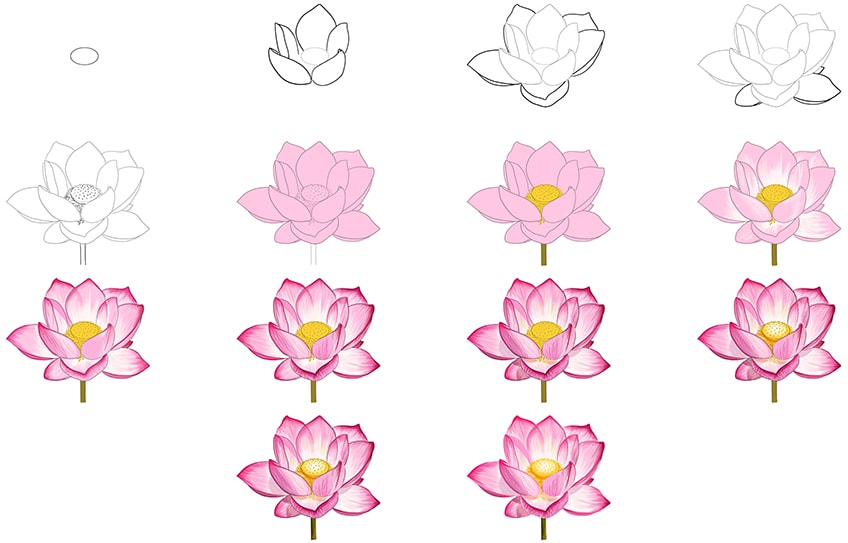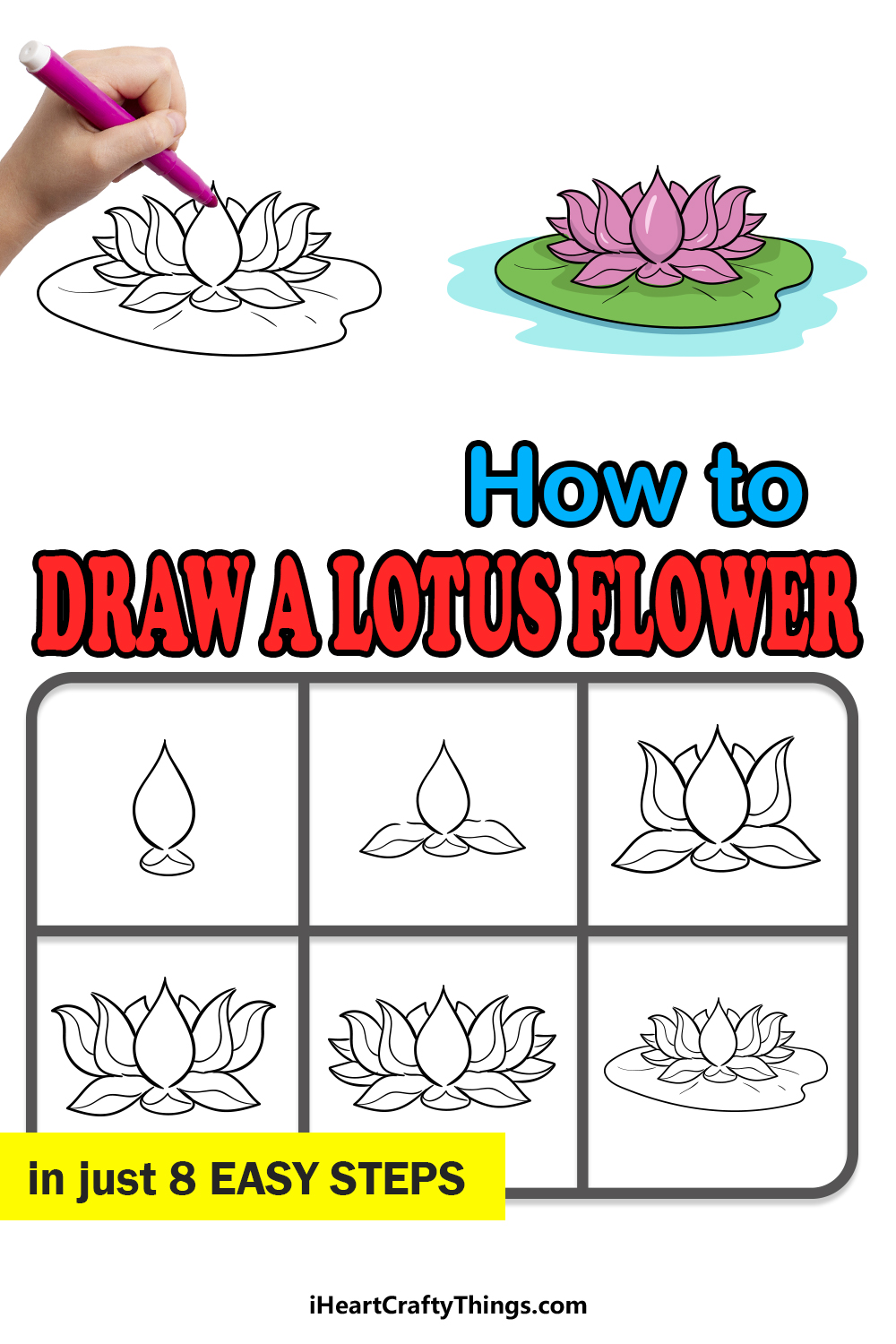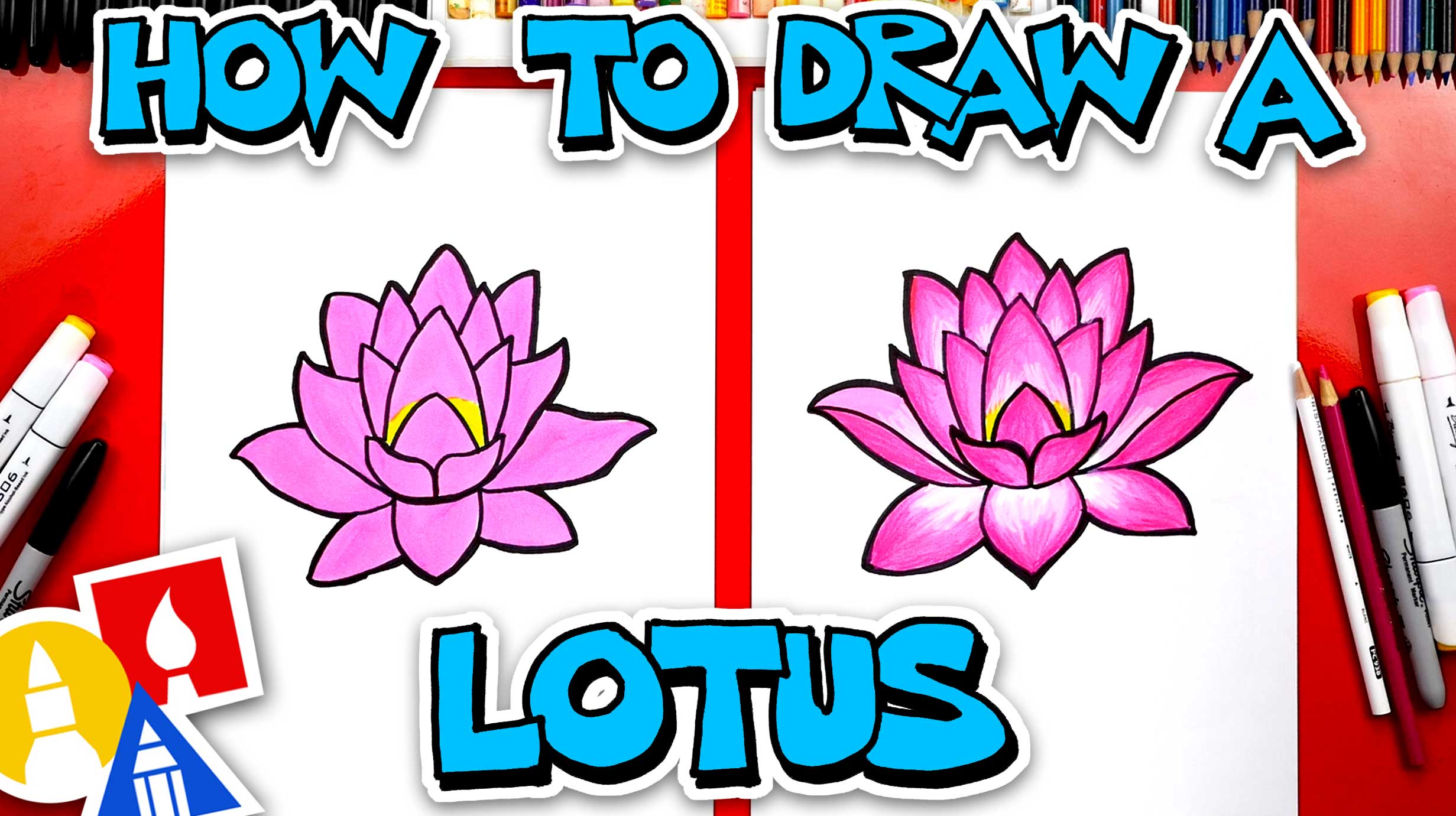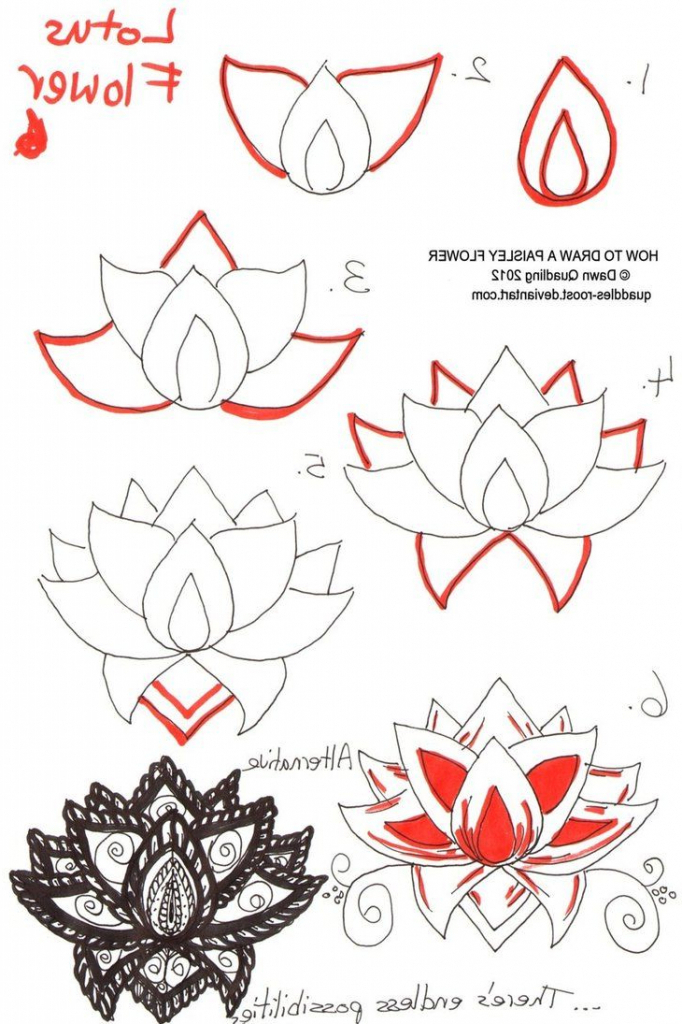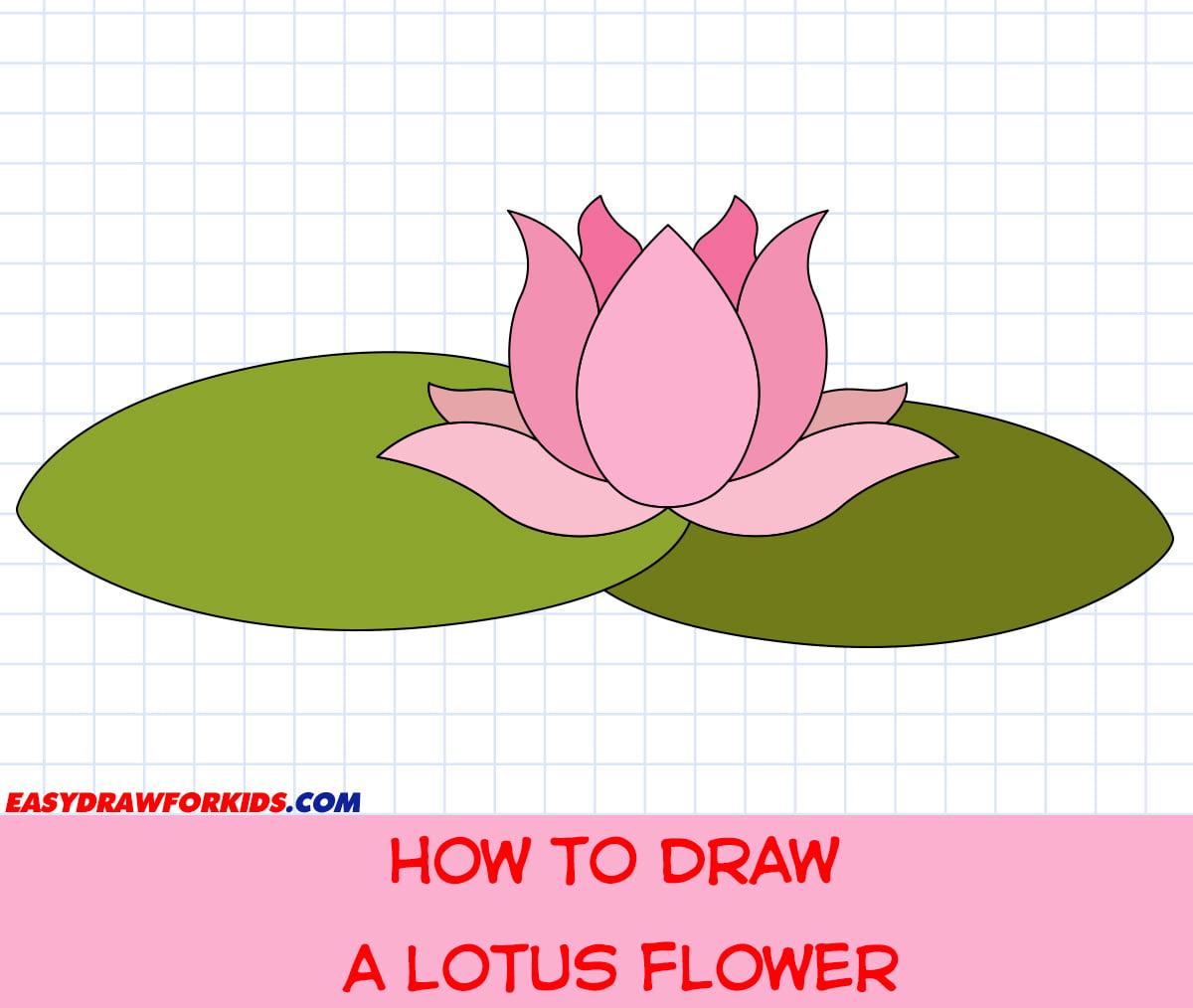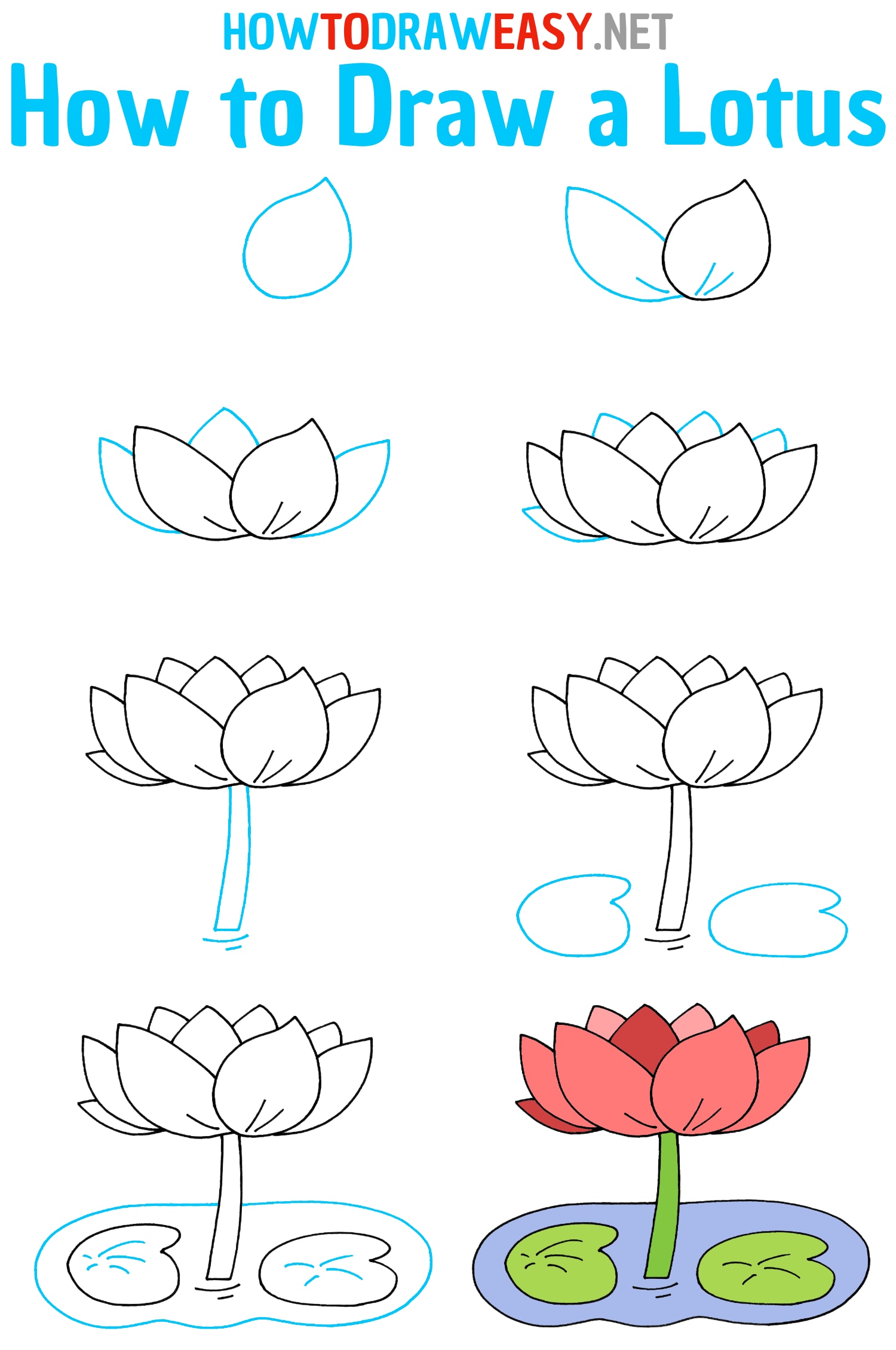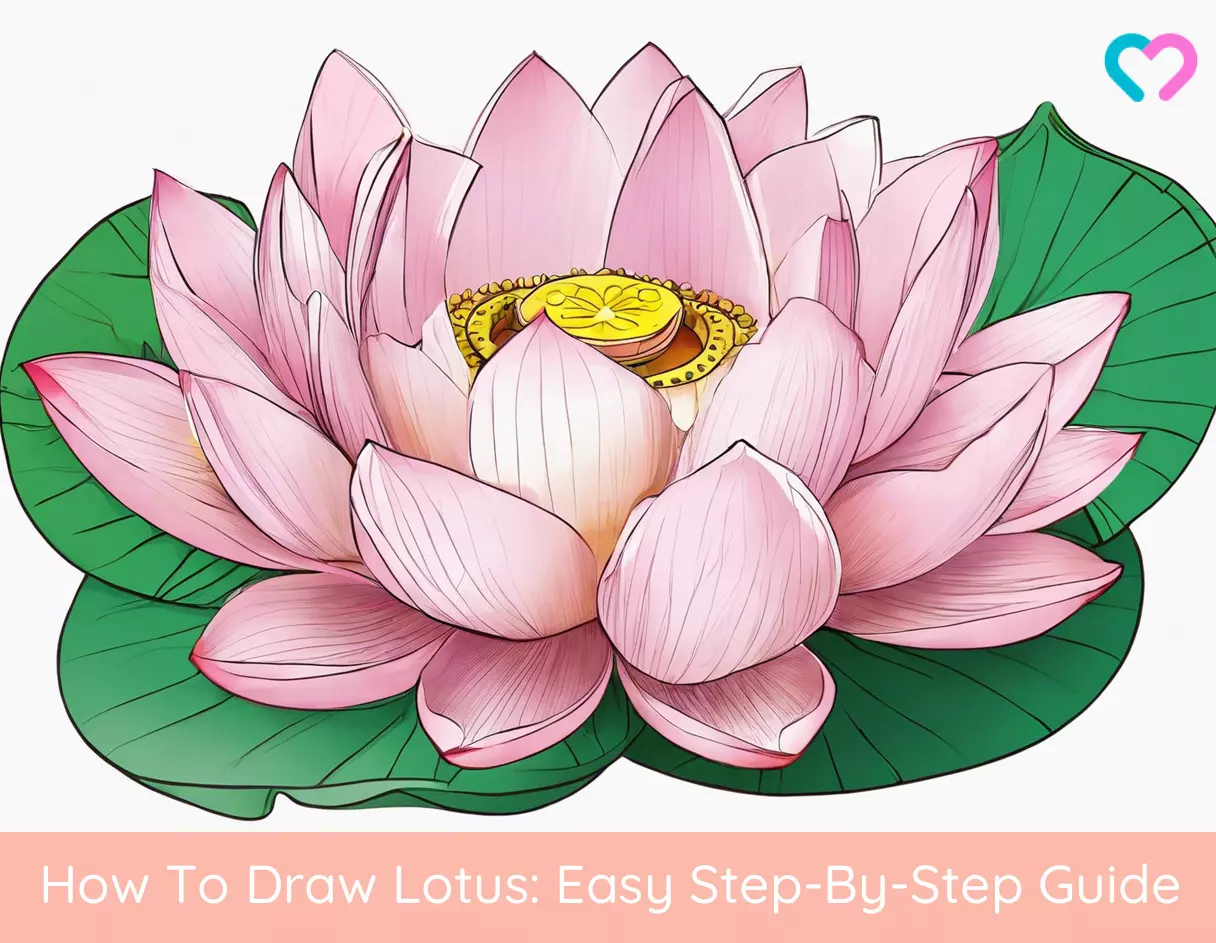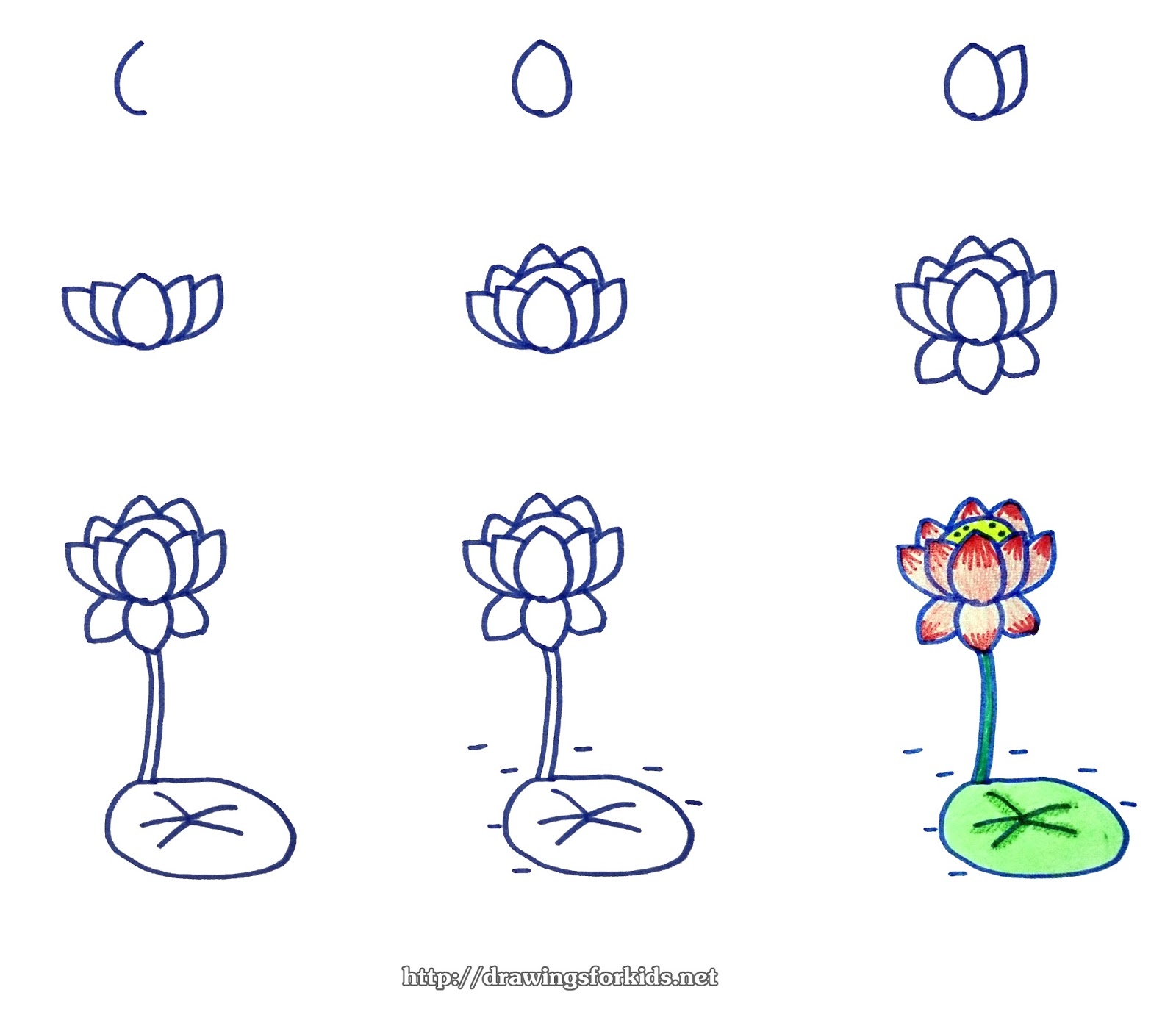How To Draw A Lotus Step By Step
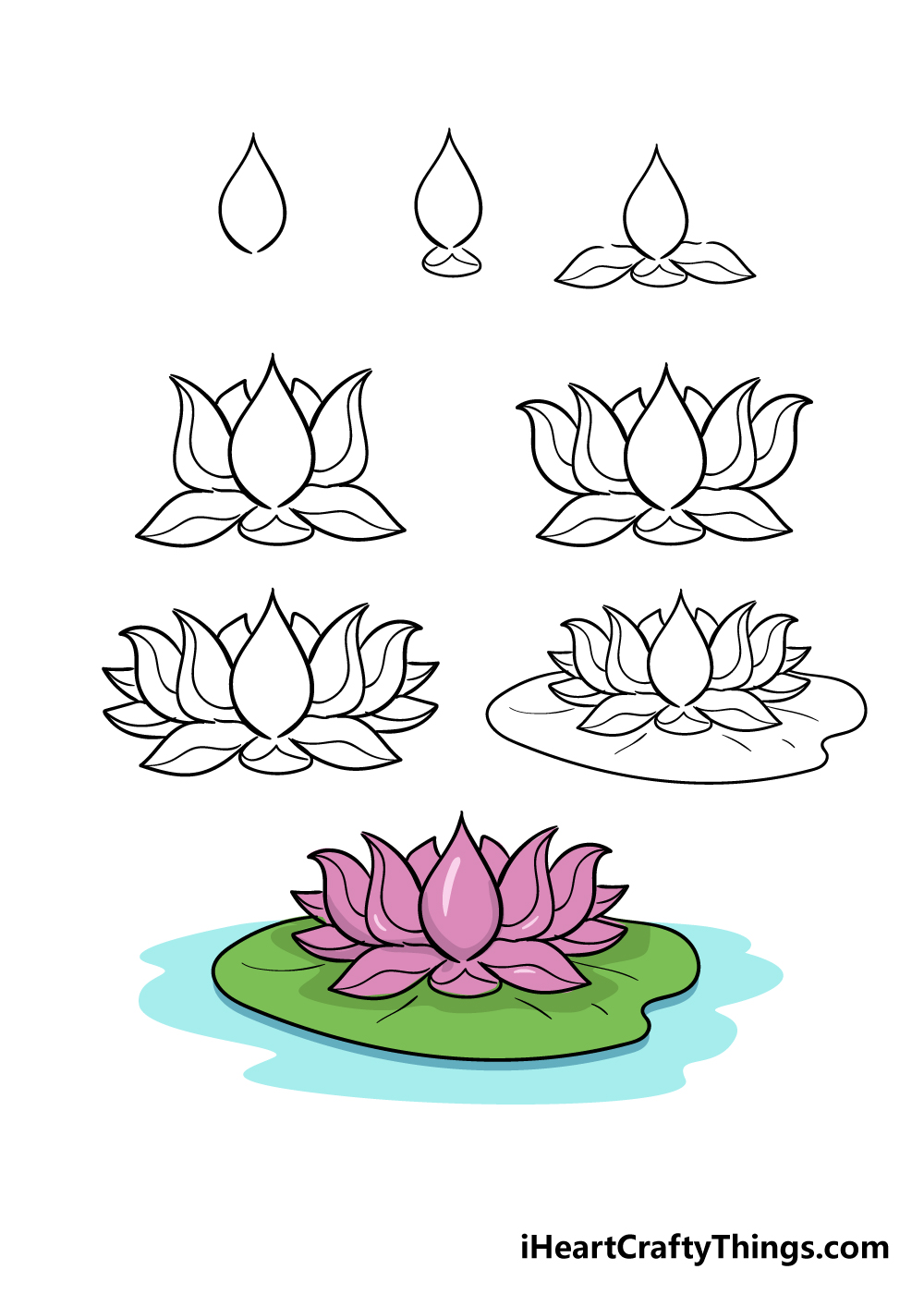
The lotus flower, revered across cultures for its beauty and symbolism, can seem an intimidating subject for artists. However, breaking down the drawing process into manageable steps makes it accessible to artists of all skill levels. This article will guide you through a simple method to create your own lotus flower drawing.
This step-by-step guide offers a simplified approach to drawing a lotus. We will begin with basic shapes and gradually add details to achieve a recognizable and aesthetically pleasing representation of this iconic flower. This method focuses on ease of execution, making it suitable for beginners while still providing a rewarding experience for more experienced artists.
Step 1: The Foundation - Basic Shapes
Begin by sketching a slightly flattened oval. This oval will form the central base of the lotus flower. Lightly draw a vertical line through the center of the oval to aid in symmetry.
Next, add two slightly curved lines extending upwards from either side of the oval. These lines represent the initial suggestion of the lotus petals.
Step 2: Adding the Inner Petals
Inside the initial oval, sketch a smaller, slightly pointed oval. This will represent the innermost layer of petals. Ensure the pointed end aligns with the top of the larger oval.
Add several small, overlapping, teardrop-shaped petals within this inner oval. These should be closely clustered together, suggesting the tightly packed core of the flower.
Step 3: Developing the Outer Petals
Now, focus on expanding the petals surrounding the central core. Sketch larger, more elongated petals that curve outwards from the base oval. Remember to maintain a sense of asymmetry for a more natural look.
Vary the size and shape of these outer petals slightly. Some should be wider, others narrower, to avoid a uniform and artificial appearance.
Step 4: Defining the Sepals
Beneath the base of the flower, add the sepals. These are the protective leaves that enclose the bud before it blooms. Draw them as small, pointed shapes curving downwards.
Generally, three to five sepals will suffice to create a realistic impression. Overlapping them slightly adds depth and visual interest.
Step 5: Refining the Lines and Adding Details
Now comes the refining stage. Darken the lines you want to emphasize, erasing any unnecessary guidelines. This step brings clarity and definition to the drawing.
Add subtle details such as veins on the petals. These delicate lines enhance the realism of the lotus. Use light, flowing strokes for this process.
Step 6: Shading and Texture
To add depth and dimension, introduce shading. Use light shading on the inner curves of the petals and darker shading where they overlap to create the illusion of depth.
Consider the direction of the light source when applying shading. This will create a more consistent and believable effect. Experiment with different shading techniques, such as hatching or blending, to achieve the desired texture.
Step 7: Adding the Stem (Optional)
To complete the lotus, add a stem extending downwards from the base of the flower. A simple, slightly curved line will suffice.
You can also add a few leaves along the stem for additional visual interest. These can be drawn as elongated, oval shapes with pointed tips.
Tips for Success
Practice regularly to improve your drawing skills. Don't be discouraged if your first attempts aren't perfect. Focus on understanding the shapes and proportions.
Use a light hand when sketching the initial guidelines. This makes it easier to erase mistakes and refine the drawing. Experiment with different drawing tools and techniques to find what works best for you.
Observe real lotus flowers or photographs for inspiration. Pay attention to the details of the petals, sepals, and leaves.
“Drawing is not what one sees but what one can make others see.” - Edgar Degas
By following these simple steps, anyone can create a beautiful drawing of a lotus flower. This accessible guide democratizes the artistic process, making it possible for individuals to connect with art on a deeper level. Creating art, even something as simple as a lotus flower, can have positive impacts on mental wellbeing. Research has demonstrated the therapeutic benefits of artistic expression, ranging from stress reduction to enhanced cognitive function.
The lotus flower represents purity, enlightenment, and rebirth in many cultures. By drawing this symbol, individuals may find a connection to these concepts, potentially fostering a sense of peace and mindfulness. Learning to draw a lotus step-by-step not only imparts an artistic skill but also offers a pathway to appreciate the beauty and symbolism inherent in nature.
